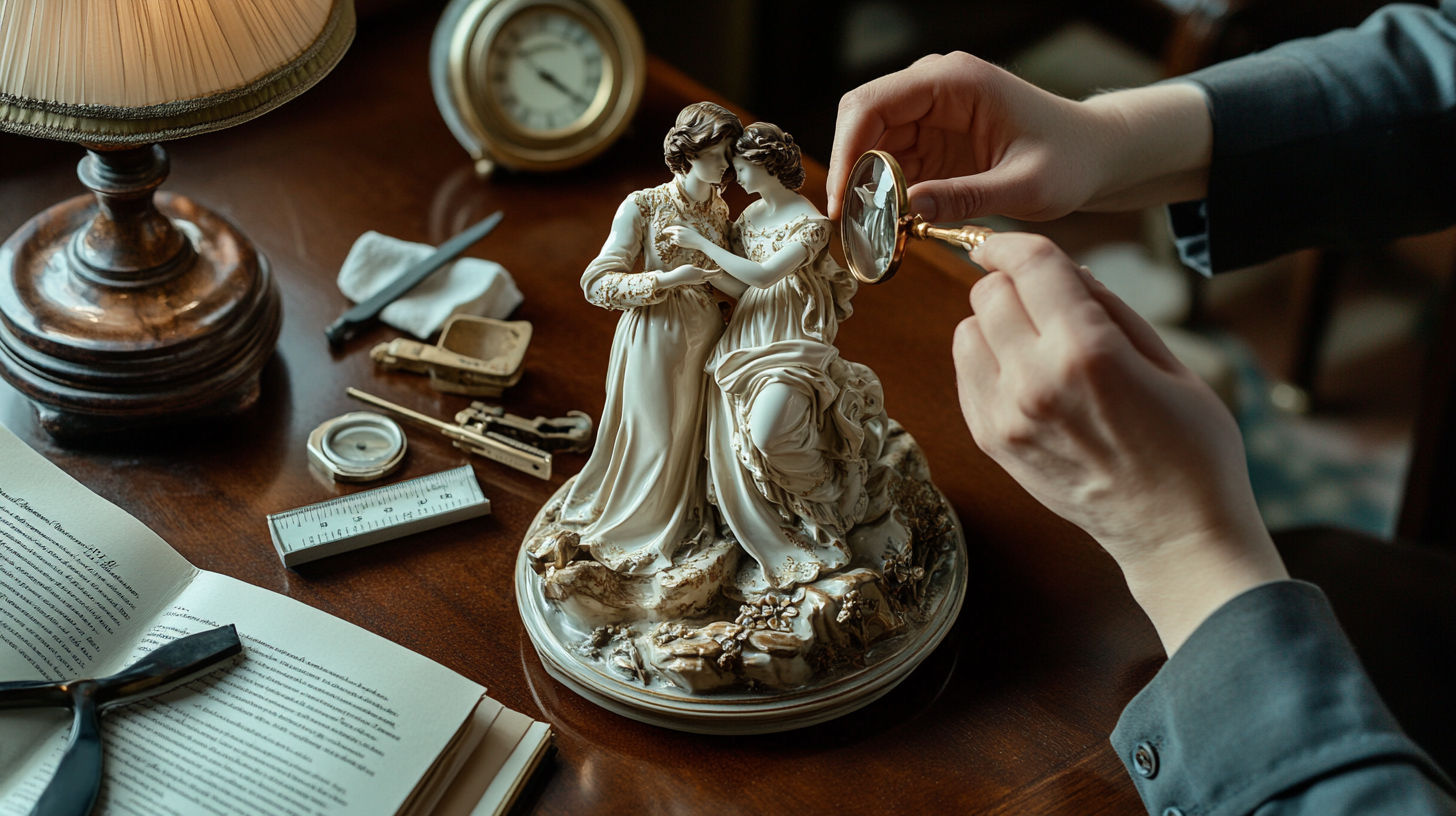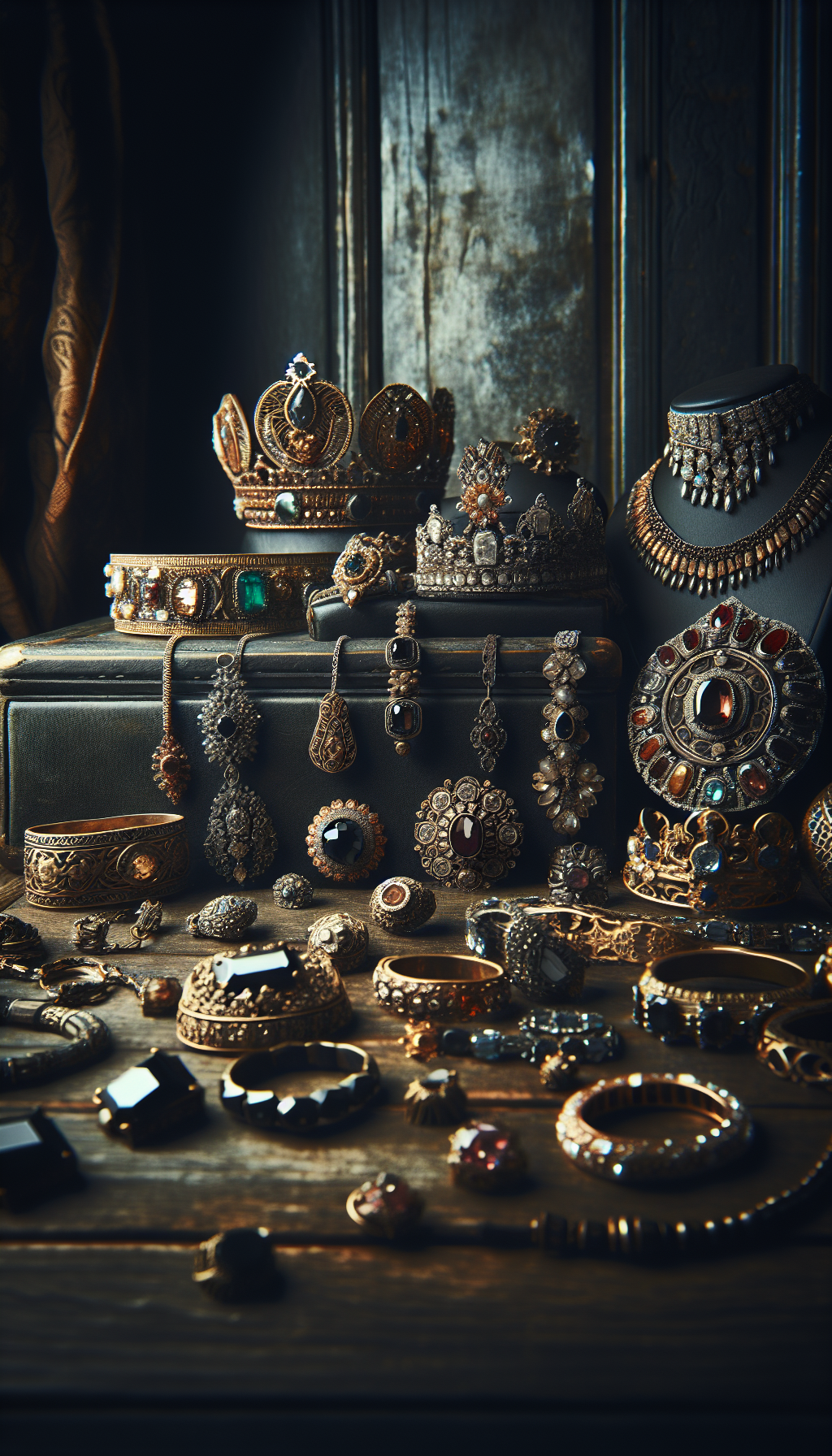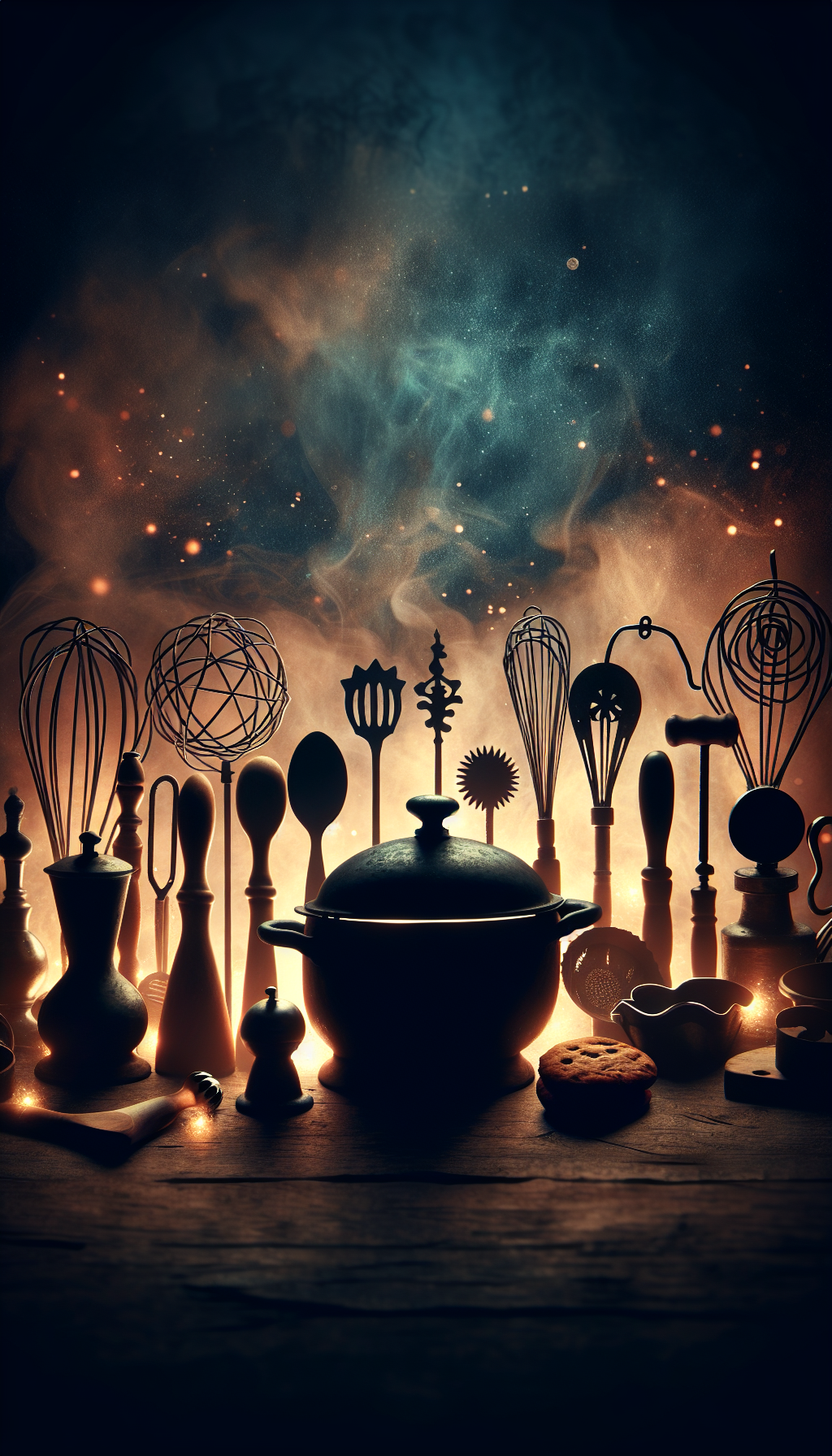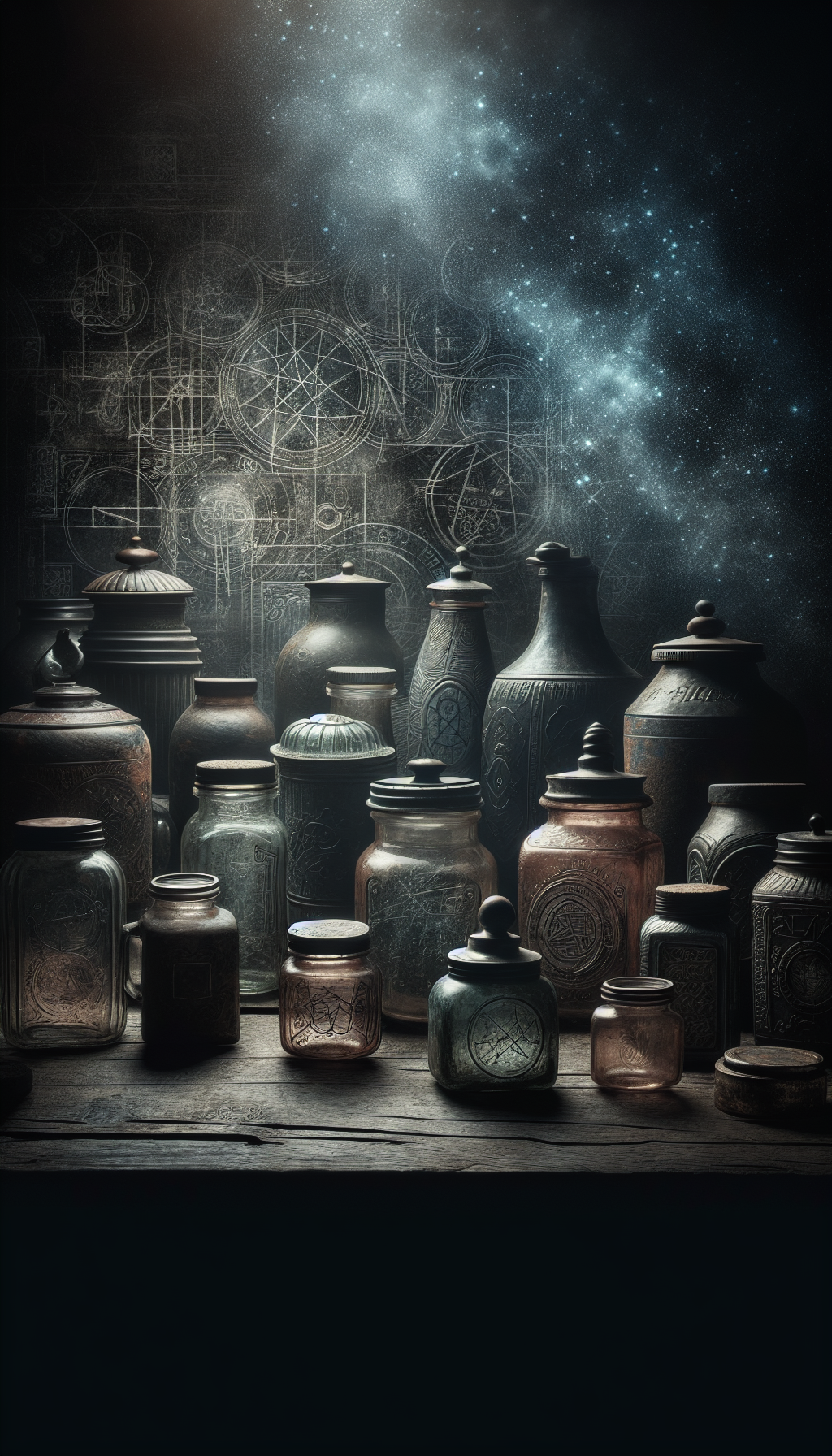Antique porcelain figurines represent one of the most enduring collectible markets, with pieces from prestigious manufacturers like Meissen, Dresden, and Capodimonte commanding impressive prices at auction houses worldwide. Whether inherited as family heirlooms or discovered at estate sales, these delicate art pieces can be extremely valuable—but determining their worth requires specialized knowledge.
In this comprehensive guide, we’ll explore the factors that determine antique porcelain figurine values, identify the most sought-after manufacturers, and provide practical tools for authentication and appraisal. Whether you’re a seasoned collector or looking to evaluate a single piece, this resource will help you navigate the fascinating world of antique porcelain valuations.
Table of Contents
- Understanding the Market for Antique Porcelain Figurines
- Key Factors That Determine Value
- Most Valuable Porcelain Manufacturers
- How to Identify Authentic Antique Figurines
- Condition Assessment and Restoration Considerations
- Current Market Prices and Value Ranges
- Where to Buy and Sell Valuable Figurines
- Frequently Asked Questions
Understanding the Market for Antique Porcelain Figurines
The market for antique porcelain figurines has remained remarkably resilient over decades, even as other collectible categories have fluctuated. Pieces crafted before 1800 are especially prized, with exceptional examples regularly fetching five and six-figure sums at prestigious auction houses.
The most valuable periods for antique porcelain figurines include:
Historical Timeline of Valuable Porcelain Figurines
- 1710-1750
Early Meissen Period
The first European hard-paste porcelain, early Meissen figurines from this era are among the most valuable, with prices routinely exceeding $10,000-$50,000 for rare examples. - 1750-1800
Golden Age of European Porcelain
This period saw the rise of Capodimonte, Chelsea, Bow, and Sèvres factories, producing highly detailed figurines now valued between $2,000-$25,000. - 1800-1850
Expansion of Dresden & Staffordshire
Dresden and Staffordshire factories produced more accessible figurines during this period, with values today typically ranging from $500-$5,000 depending on quality and rarity. - 1850-1900
Victorian Era Figurines
Mass production began to influence the market, though exceptional pieces from established manufacturers still command $1,000-$10,000 in today's market.
Current market trends show increasing interest in rare, museum-quality pieces with documented provenance. According to recent auction data, prices for exceptional antique porcelain figurines have increased approximately the financial crisis, as investors seek tangible assets with historical significance.
As Fine Art Restoration notes in their antique porcelain valuation guide, understanding the maker’s marks and manufacturing techniques is crucial for properly assessing value in today’s market.
Key Factors That Determine Value
When evaluating antique porcelain figurines, experts consider multiple factors that can dramatically impact value:
Value Influencing Factors
Manufacturer and Origin
The manufacturing origin is often the single most important value factor. Figurines from prestigious factories command the highest prices:
- Meissen: As the first European manufacturer of hard-paste porcelain, Meissen figurines are consistently the most valuable, particularly those designed by master modelers like Johann Joachim Kändler.
- Sèvres: French royal porcelain with distinctive rich colors and gilding, highly prized by collectors.
- Capodimonte: Italian figurines known for exceptional, intricate detailing and Baroque styling.
- Dresden: Not a single factory but a style from numerous German manufacturers; authentic Dresden pieces bear distinct marks.
- Chelsea and Bow: Early English porcelain factories whose figurines command premium prices, especially those from the “raised anchor” period.
Age and Rarity
Older figurines, particularly those from the 18th century, generally command higher prices due to their historical significance and relative scarcity. Limited productions runs or discontinued lines significantly increase value. According to Gifting Online, rarity is a critical factor, with pieces from specific limited eras commanding premium prices.
Condition
The condition dramatically impacts value, with mint condition pieces often worth 3-5 times more than damaged examples:
Condition Assessment Checklist
Factors that affect antique figurine valuation
- No restoration or repairs (original condition)
- No chips, cracks, or hairlines
- Original paint and gilding intact
- No crazing (fine surface cracks in glaze)
- No discoloration or staining
- All delicate elements (fingers, flowers, etc.) intact
- Original base or stand included
Artistic Merit and Detail
The quality of modeling, painting, and overall artistry significantly impacts value. Pieces demonstrating exceptional craftsmanship, particularly those with:
- Lifelike facial expressions
- Intricate lace or textile details
- Complex, multi-figure compositions
- Exceptional hand-painted decoration
Provenance and Documentation
Documented history of ownership, especially prestigious collections or royal connections, can dramatically increase value. Original documentation, including certificates of authenticity, original boxes, and purchase receipts, can add 20-50% to a figurine’s value.
Historical and Cultural Significance
Figurines depicting important historical events, notable personalities, or culturally significant themes often carry additional value. Pieces with romantic, classical, or mythological themes remain particularly desirable to collectors.
As reported by Auction Ninja, historical significance can transform an ordinary figurine into a valuable collectible, with some rare antique versions dating to the 1700s worth thousands of dollars.
Most Valuable Porcelain Manufacturers
Understanding which manufacturers produce the most valuable figurines helps collectors focus their investments and sellers accurately price their items.
Meissen
Founded in 1710 in Germany, Meissen holds the distinction of being Europe’s first true porcelain manufacturer. Their figurines remain the gold standard for collectors:
- Identification: Look for the crossed swords mark (though marking styles evolved over time)
- Most Valuable Period: 1730-1775, particularly pieces modeled by Johann Joachim Kändler
- Price Range: $1,000-$50,000+, with exceptional pieces exceeding $100,000
- Notable Themes: Commedia dell’arte characters, court scenes, pastoral groups, animal figurines
The Hoarde notes that “Meissen is a name synonymous with high quality, which is why its porcelain is highly valued and collectable. Early figurines are especially collectable, although they also come with a high price tag.”
Sèvres
The royal porcelain factory of France, Sèvres produced exquisite pieces characterized by vibrant colors and elaborate gilding:
- Identification: Look for interlaced “L"s with a letter inside indicating year of production
- Most Valuable Period: 1756-1800, especially during the reign of Louis XV
- Price Range: $2,000-$30,000+
- Notable Themes: Aristocratic figures, allegorical groups, biscuit (unglazed) figures
Capodimonte
This Italian manufacturer created extraordinarily detailed figurines with distinctive Baroque and Rococo styling:
- Identification: Early pieces marked with a fleur-de-lis or Neapolitan crown
- Most Valuable Period: 1743-1759 (Naples period) and 1771-1834 (Buen Retiro period)
- Price Range: $1,000-$20,000+
- Notable Themes: Elaborate court scenes, street vendors, musicians, mythological scenes
Dresden
While not a single factory but rather a style from multiple German manufacturers, authentic Dresden figurines are highly valued:
- Identification: Various marks including blue crown mark and specific factory stamps
- Most Valuable Period: 1880-1924
- Price Range: $500-$15,000+
- Notable Themes: Lace figurines (with delicate lattice porcelain resembling fabric), romantic couples, floral-adorned pieces
Chelsea and Bow
These early English factories produced distinctive, high-quality figurines:
- Identification: Chelsea used an anchor mark (raised anchor period most valuable)
- Most Valuable Period: 1745-1769
- Price Range: $1,000-$25,000+
- Notable Themes: Classical figures, pastoral scenes, mythological characters
Manufacturer Value Comparison
Typical price ranges for antique figurines by manufacturer
</tbody>
</table>
According to WealthGang, collectors searching for the most valuable pieces should focus on these premium manufacturers, as pristine examples can fetch over $1,000, with exceptional pieces reaching much higher.
How to Identify Authentic Antique Figurines
The ability to distinguish genuine antique porcelain figurines from reproductions and fakes is essential for collectors and sellers alike. Here are key authentication techniques:
Examining Maker’s Marks
Maker’s marks serve as the primary identification method for most valuable porcelain figurines:
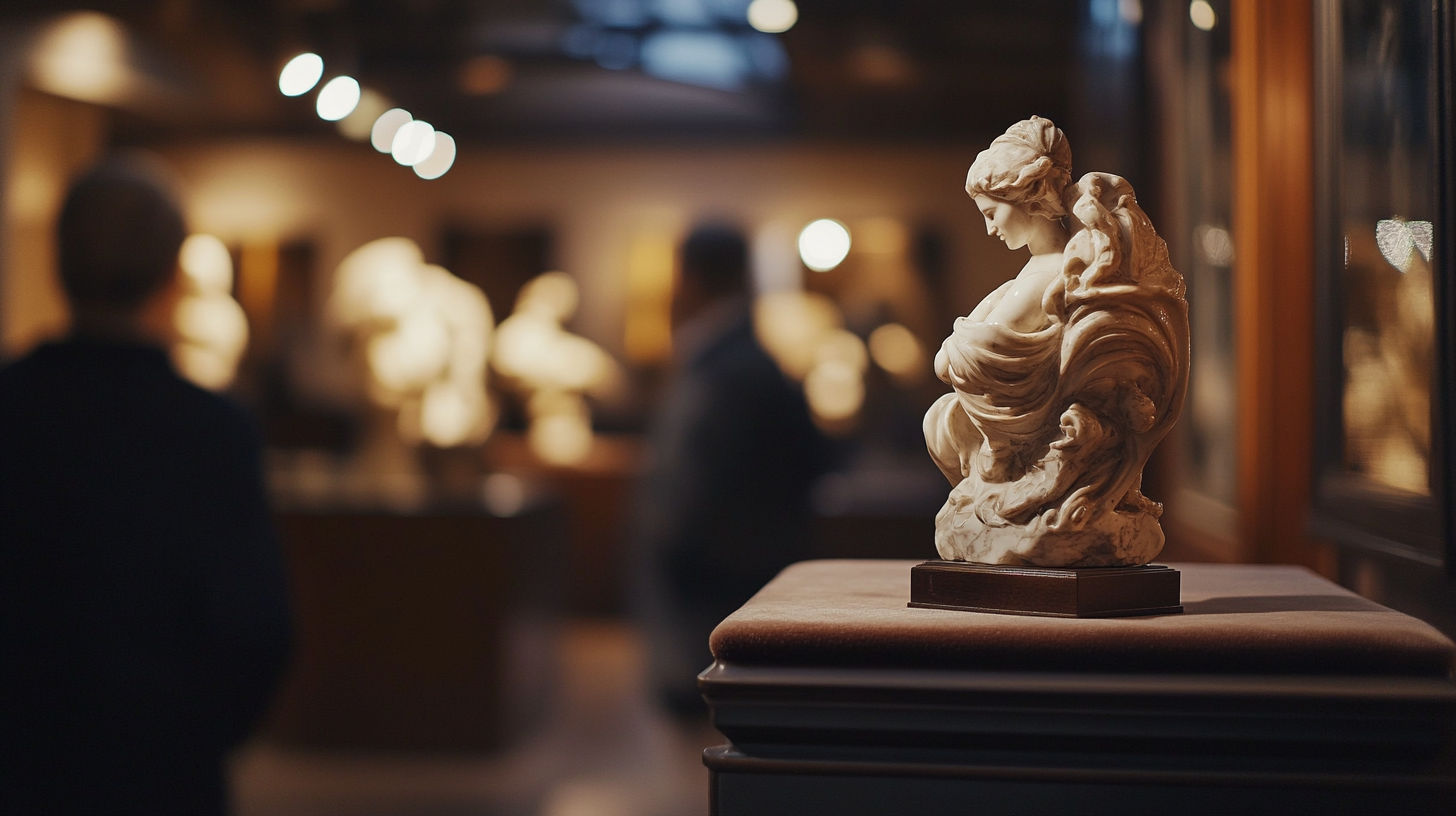
- Location: Typically found on the bottom or interior of the base
- Evolution: Marks changed over time, helping date the piece
- Authentication: Reference specialized books or online databases like Kovels to verify mark authenticity
- Warning Signs: Perfect, machine-printed marks may indicate modern reproductions
According to Fine Art Restoration’s porcelain valuation guide, analyzing maker’s marks is crucial for establishing both the manufacturer and era of valuable porcelain pieces.
Evaluating Manufacturing Techniques
Antique figurines exhibit distinct production characteristics:
- Mold Lines: Hand-finished mold lines are softer and less obvious than in modern pieces
- Weight: Antique porcelain typically feels heavier and more substantial than modern reproductions
- Base Construction: Unglazed or partially glazed bases often indicate authentic antique pieces
- Detail Quality: Examine facial features, flowers, and lace work for hand-painted detail and dimensional depth
Material Composition Assessment
The material composition offers important clues to authenticity:
- Porcelain Type: Hard-paste porcelain (used by Meissen) has a different appearance than soft-paste (used by early English factories)
- Translucency: Hold the thinner areas up to light—quality porcelain will have a distinct translucent quality
- Surface Texture: Authentic antique porcelain has a distinctive smooth yet slightly textured feel
- Glaze Quality: Examine for depth, slight irregularities, and a soft glow rather than a high-gloss modern finish
Period-Specific Characteristics
Different eras exhibit distinctive characteristics:
- 18th Century: Typically smaller in scale with softer colors and simpler designs
- Early 19th Century: More complex compositions with greater attention to detail
- Late 19th Century: Often larger with more vibrant colors and elaborate decoration
- Early 20th Century: Frequently shows Art Nouveau or Art Deco influences
Using Technology and Professional Resources
For valuable or questionable pieces, consider these authentication resources:
- UV Light Testing: Reveals modern restorations and repairs not visible to the naked eye
- Professional Appraisal: Consult with specialists at major auction houses like Sotheby’s or Christie’s
- Laboratory Analysis: For exceptionally valuable pieces, scientific testing can determine age and composition
Bidsquare’s collection of vintage and antique porcelain figurines provides excellent reference examples of authenticated pieces, which can be invaluable for comparison when identifying your own figurines.
Condition Assessment and Restoration Considerations
Condition remains one of the most critical factors in determining an antique figurine’s value. Pristine, undamaged pieces can command prices several times higher than similar figurines with even minor damage.
Common Condition Issues
When evaluating porcelain figurines, watch for these common issues:
- Chips and Losses: Missing elements, especially on delicate areas like fingers, flower petals, or lace
- Hairline Cracks: Fine cracks that may be difficult to see without proper lighting
- Repairs and Restorations: Previous repair work, which may be detected under UV light
- Crazing: Fine networks of cracks in the glaze surface
- Color Loss: Fading or wearing away of painted decoration or gilding
- Firing Flaws: Original manufacturing defects like warping or glaze bubbles
Impact of Condition on Value
The relationship between condition and value follows consistent patterns:
Condition Impact on Figurine Value
- Mint Condition: Original, undamaged figurines typically command 100% of market value
- Excellent Condition: Minor age-appropriate wear reduces value by only 10-20%
- Good Condition: Small chips or minor repairs can reduce value by 30-50%
- Fair Condition: Major damage or amateur repairs can reduce value by 60-80%
According to Fontaine’s Auction Gallery, “The condition of the item is also a major point of consideration—even the smallest cracks can largely diminish the value of your piece.”
Restoration Considerations
Deciding whether to restore a damaged figurine requires careful consideration:
- Professional vs. Amateur Restoration: Only use experienced porcelain restoration specialists for valuable pieces
- Documentation: Keep detailed records of any restoration work performed
- Disclosure: Always disclose restoration when selling (ethical and often legal requirement)
- Value Impact: For museum-quality pieces, professional restoration may restore 50-70% of lost value, while poor restoration can further decrease value
When to Preserve “As Is”
In some cases, leaving a figurine unrestored is the better choice:
- Museum-Quality Rarities: Exceptionally rare pieces may maintain higher value with original damage than with modern restoration
- Historical Significance: Pieces with important provenance may be devalued by restoration
- Minor Damage: Age-appropriate wear on very old pieces is expected and sometimes preferred by collectors
Care and Preservation
Proper care helps maintain condition and value:
- Handling: Always handle figurines with clean, dry hands, supporting the base rather than delicate elements
- Display Environment: Maintain consistent temperature and humidity; avoid direct sunlight
- Cleaning: Use only soft brushes and avoid chemical cleaners
- Storage: Wrap in acid-free tissue paper and store in padded containers
As Gifting Online notes, a figurine in mint condition, without scratches, chips, or missing parts, will command a significantly higher price, making proper care essential for maintaining value.
Current Market Prices and Value Ranges
The market for antique porcelain figurines varies considerably based on manufacturer, age, condition, and rarity. Here’s a comprehensive overview of current market values as of 2025:
Premium Manufacturer Price Ranges
The most prestigious manufacturers consistently command the highest prices:
High-End Figurine Price Ranges by Manufacturer and Period
Current market values for exceptional examples, 2025
| Category | Price | Notes |
|---|---|---|
| Meissen (1710-1775) | $5,000-$50,000+ | Exceptional examples, particularly from Kändler |
| Sèvres (1756-1800) | $2,500-$30,000+ | Royal court figures and biscuit figures |
| Capodimonte (1743-1834) | $1,000-$20,000+ | Original Naples and Buen Retiro periods |
| Dresden (1880-1924) | $800-$15,000+ | Lace figurines and romantic couples |
| Chelsea (1745-1769) | $1,500-$25,000+ | Rare figures from raised anchor period |
</tbody>
</table>
Mid-Range Market Values
More accessible yet still valuable figurines:
Mid-Range Figurine Values
Mainstream collector market, 2025
| Category | Price | Notes |
|---|---|---|
| Meissen Kändler Figures (1735-1755) | $10,000-$100,000+ | Museum-quality examples in perfect condition |
| Meissen Later Period (1760-1800) | $3,500-$25,000 | Excellent condition with no repairs |
| Sèvres Biscuit Figures (1756-1780) | $5,000-$30,000 | Royal court figures and allegorical groups |
| Capodimonte Naples Period (1743-1759) | $4,000-$35,000 | Original period with documented provenance |
| Chelsea "Raised Anchor" Period (1749-1752) | $8,000-$40,000 | Rare figures with original decoration |
</tbody>
</table>
Recent Auction Highlights
Notable recent sales demonstrate the continuing strength of the high-end market:
Notable Figurine Auction Results 2024-2025
Exceptional auction sales demonstrating market strength
| Category | Price | Notes |
|---|---|---|
| Meissen 19th Century | $800-$3,500 | Standard quality figures in good condition |
| Dresden Lace Figurines (1880-1924) | $500-$2,500 | Romantic couples and dancing figures |
| Ludwigsburg (1760-1824) | $600-$3,000 | Court figures and classical subjects |
| Nymphenburg (18th-19th Century) | $700-$4,500 | Commedia dell'arte and court figures |
| French Sèvres-style (19th Century) | $400-$2,000 | Later production with good detailing |
</tbody>
</table>
Value Trends and Market Dynamics
Several trends characterize the current antique porcelain figurine market:
- Connoisseur Focus: The highest values are concentrated on exceptional, museum-quality pieces while middle-market values have stabilized
- Provenance Premium: Documented history from prestigious collections adds 20-40% to comparable pieces
- Condition Emphasis: Perfect condition commands increasingly steep premiums over damaged examples
- Regional Variations: European markets typically value Continental figurines higher than American markets
- Rising Asian Interest: Growing collector base in Asia has increased values for certain figurine categories
According to FinanceBuzz’s analysis of valuable figurines, rare museum-quality pieces continue to achieve record prices, particularly Meissen figurines like the “Apple Tree Boy & Apple Tree Girl” and “A Pair of Lovers With a Bird Cage.”
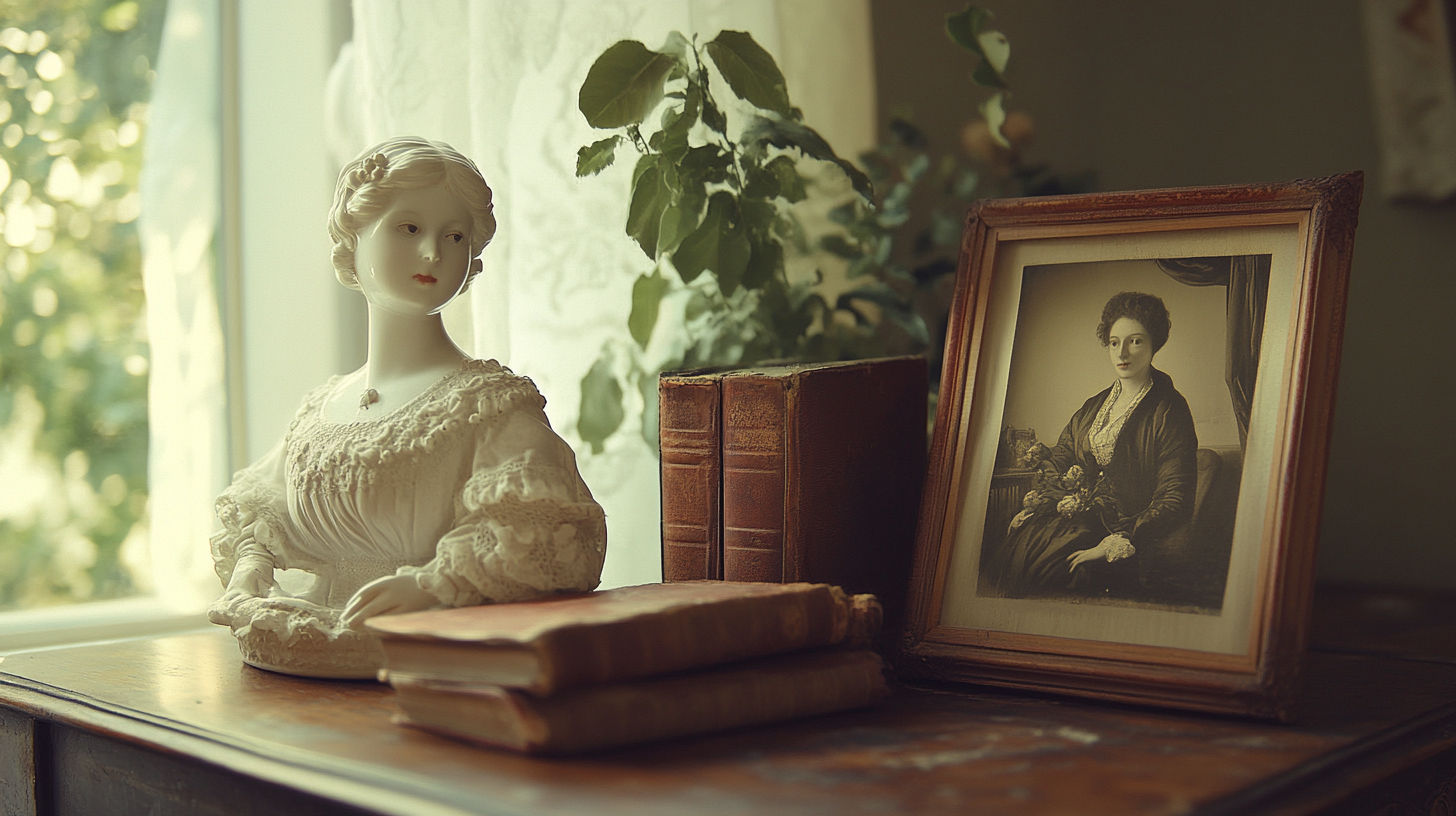
Data from eBay’s antique porcelain figurine section confirms strong interest in pre-1800 examples, with rare pieces like 18th Century Derby porcelain figures commanding premium prices even in online marketplaces.
Where to Buy and Sell Valuable Figurines
Different venues offer distinct advantages depending on a figurine’s value, rarity, and condition. Here’s a comprehensive guide to the best marketplaces:
Premium Auction Houses
For museum-quality, high-value figurines, traditional auction houses remain the gold standard:
- Sotheby’s and Christie’s: Best for exceptional pieces valued over $10,000, with global reach and expert authentication
- Bonhams and Doyle: Strong reputation for decorative arts with dedicated European ceramics departments
- Regional Auction Houses: Increasingly competitive with major houses, often with lower seller’s premiums
Specialized Dealers and Galleries
Established dealers offer expertise and carefully curated selections:
- Antique Porcelain Specialists: Offer authentication guarantees and proper attribution
- Fine Art Galleries: Higher-end galleries increasingly include important decorative arts
- Antique Shows and Fairs: Direct access to multiple dealers and immediate purchase opportunities
According to 1stDibs’ antique porcelain figurines section, dealer pricing for premium pieces like antique Meissen pairs can range from $600 to several thousand dollars, with authenticated pieces often carrying detailed provenance information.
Online Marketplaces
Digital platforms offer convenience and broad selection:
- 1stDibs: Curated platform for higher-end pieces with dealer guarantees
- eBay: Wide selection across all price points, but requires careful authentication
- Etsy: Growing selection of vintage and antique figurines, often from small dealers
- Specialized Auction Platforms: Sites like Bidsquare focus on authenticated antiques
Private Sales and Collector Networks
Established collectors often prefer direct transactions:
- Collector Clubs and Societies: Networking opportunities and member sales
- Social Media Groups: Specialized Facebook groups and forums connect buyers and sellers
- Estate Liquidations: Direct purchase from estates before public auction
Value Maximization Strategies for Sellers
When selling valuable figurines, consider these approaches:
- Authentication First: Obtain professional authentication for significant pieces
- Proper Documentation: Assemble provenance documents, previous appraisals, and condition reports
- Timing Considerations: Specialized decorative arts auctions typically achieve better results than general sales
- Market Matching: Higher-value pieces perform better at established auction houses; mid-range pieces may net more through dealer networks
- International Exposure: Ensure global marketing for manufacturers with international collector bases
As MaxxLuxury’s vintage porcelain figurines collection demonstrates, even online marketplaces now specialize in authenticated antique porcelain from premium manufacturers, creating new opportunities for both buyers and sellers.
Expert Valuation Resources
For authoritative valuations beyond self-assessment, consider these professional resources:
Professional Appraisal Services
When significant value is suspected, professional appraisals provide documentation and expertise:
- Certified Appraisers: Look for certification from organizations like the International Society of Appraisers (ISA) or American Society of Appraisers (ASA)
- Auction House Specialists: Major auction houses offer valuation services, often as a prelude to consignment
- Insurance Appraisals: Specialized appraisals for insurance coverage often provide detailed value documentation
Reference Libraries and Databases
Comprehensive information sources for self-education:
- Miller’s Antiques Guides: Industry-standard price guides with detailed information on porcelain figurines
- Kovel’s Price Guide: Regular updates on market prices across categories
- Museum Catalogues: Publications from major decorative arts museums provide authentication benchmarks
- Factory Archives: Some manufacturers like Meissen maintain historical archives accessible to researchers
Digital Valuation Tools
Online resources that help with preliminary assessments:
- Auction Result Databases: Services like Invaluable and LiveAuctioneers maintain searchable price results
- Collector Forums: Sites like Antique-Porcelain.com offer expert member feedback
- Identification Apps: Emerging artificial intelligence tools for preliminary maker identification
Specialized Educational Resources
Knowledge development for serious collectors:
- Porcelain Collecting Courses: Organizations like Sotheby’s Institute offer specialized training
- Museum Conservation Departments: Some offer public programs on authentication and preservation
- Collector Conventions: Events featuring authentication clinics and expert presentations
Essential Valuation Resources
Kovels Online Price Guide
Comprehensive database of antique and collectible prices, including extensive porcelain figurine sections with identification marks and historical information.
International Society of Appraisers
Find certified appraisers specializing in decorative arts and porcelain figurines, with professional standards and ethics requirements.
Meissen Collector's Guide
Official manufacturer archive information on marks, periods, and notable figurine series from Europe's oldest porcelain manufacturer.
Victoria and Albert Museum Ceramics Collection
World-class ceramics collection with extensive online catalog of important benchmark pieces for comparison and authentication.
LiveAuctioneers Porcelain Price Results
Searchable database of past auction results for porcelain figurines, providing recent market value comparisons across multiple auction houses.
Fine Art Restoration Porcelain Valuation Guide
Detailed guide to analyzing maker's marks, colors, and styles of European porcelain, including identification techniques for major manufacturers.
Sotheby's Porcelain Auction Calendar
Upcoming auctions featuring important porcelain figurines, with pre-sale estimates and past results for market value reference.
Antique Porcelain Company
Specialist dealer offering identification services and educational resources on distinguishing authentic antique porcelain figurines from reproductions.
Frequently Asked Questions About Antique Porcelain Figurines
How do I know if my porcelain figurines are valuable?
To determine if your porcelain figurines are valuable, examine these key factors:
Maker’s Marks: Look for manufacturer marks on the base and research them using reference guides or online databases.
Age: Generally, pre-1900 figurines hold greater value, with 18th-century pieces being especially desirable.
Rarity: Limited production runs or pieces from specific eras are often worth more due to their scarcity.
Condition: Figurines in mint condition, without scratches, chips, or missing parts, will command significantly higher prices.
Artistic Quality: Exceptional craftsmanship, intricate details, and superior painting quality increase value.
Provenance: Documented history of ownership, especially from notable collections, can substantially enhance value.
For definitive valuation of potentially valuable pieces, consult with a professional appraiser specializing in antique porcelain or contact specialists at major auction houses like Sotheby’s or Christie’s for evaluation.
Is antique porcelain worth anything?
Yes, antique porcelain can be quite valuable, with values ranging from hundreds to hundreds of thousands of dollars depending on several factors:
Manufacturer: Pieces from prestigious factories like Meissen, Sèvres, and early Chelsea command the highest prices.
Age: Generally, older pieces (especially 18th century) are more valuable than later examples.
Historical Significance: Pieces with connections to royalty or historical events carry premium value.
Condition: Even small cracks or chips can dramatically reduce value—as Fine Art Restoration notes, "even the smallest cracks can largely diminish the value of your piece."
Authenticity: Genuine antique pieces are worth substantially more than later reproductions or copies.
The porcelain market has remained relatively stable compared to other antique categories, with exceptional pieces continuing to appreciate in value, particularly those with impeccable provenance and condition.
What are the most sought-after figurines?
The most sought-after and valuable figurines include:
Meissen Figurines: Particularly the "Apple Tree Boy & Apple Tree Girl" pair and early Kändler-designed figures from the 1730s-1750s.
Meissen "Great Bustard" Models: Large-scale bird figures that can command over $100,000 at auction.
Meissen "A Pair of Lovers With a Bird Cage": Romantic figurines that regularly achieve high five-figure prices.
Early Sèvres Biscuit Figures: Especially royal court figures and allegorical groups from the Louis XV period.
Chelsea "Gold Anchor" Period Figurines: Particularly the Four Seasons series and mythological subjects.
Original Naples Period Capodimonte: Court scenes and elaborate multi-figure compositions from 1743-1759.
Russian Gardner Factory "Catcher of Fleas": Distinctive 19th-century figures known for detailed social commentary.
Dresden Lace Figurines: Intricate pieces featuring detailed "lace" work in porcelain, especially dancing couples.
Demand for these pieces remains strong among serious collectors, museums, and investors, with the finest examples continually establishing new auction records.
What is the most collectable porcelain?
Meissen porcelain is widely considered the most collectable due to its historical significance as Europe's first true hard-paste porcelain manufacturer and its exceptional artistic quality. Within the Meissen catalog, these categories are particularly prized:
Early Meissen Figurines (1730-1775): Especially those modeled by Johann Joachim Kändler, considered the greatest porcelain sculptor of his era.
Meissen Animal Figurines: Particularly the large-scale naturalistic birds and exotic animals.
Meissen Commedia dell’arte Figures: Characters from Italian comedy that were popular subjects in early European porcelain.
Other highly collectable porcelain manufacturers include:
Sèvres: French royal porcelain, especially pieces with documented royal provenance
Early Chelsea and Bow: The first important English porcelain factories
Original Capodimonte: Italian porcelain from the Naples period (1743-1759)
KPM Berlin: Especially portrait plaques and neoclassical figures
Serious collectors typically focus on specific manufacturers, periods, or themes rather than collecting broadly across all porcelain figurines.
How can I tell if a porcelain figurine is a reproduction?
Distinguishing authentic antique porcelain figurines from reproductions requires careful examination of several characteristics:
Maker’s Marks: Study the mark carefully—reproductions often have marks that are too crisp, too deep, or slightly different from authentic marks. Compare to reference guides.
Material Weight and Feel: Authentic antique porcelain typically feels heavier and denser than modern reproductions. Hard-paste porcelain has a distinctive "ring" when tapped gently.
Mold Sharpness: Antique figurines show more hand-finishing and softer detail edges, while reproductions often have sharper, more mechanical mold lines.
Paint Application: Examine the paint under magnification—antique pieces show brush strokes and slight variations in hand-painted areas, while reproductions may have more uniform, perfect application.
Wear Patterns: Authentic antique pieces typically show consistent, age-appropriate wear, while reproductions may have artificially distressed areas or no wear at all.
UV Light Testing: Under ultraviolet light, many modern glazes and paints fluoresce differently than antique materials.
Base Construction: Examine the base—unglazed or partially glazed bases are common in authentic antique pieces.
When in doubt, consult with a specialist at an auction house or porcelain expert, especially for potentially valuable pieces.
Should I clean my antique porcelain figurines?
Cleaning antique porcelain figurines requires extreme caution, as improper methods can permanently damage valuable pieces:Safe Cleaning Methods:
- Dust gently with a soft, clean makeup brush or artist’s brush
- For slightly more thorough cleaning, use distilled water (never tap water) with a small amount of mild, non-detergent soap
- Clean a small area at a time, then rinse with distilled water and dry immediately with a soft, lint-free cloth
Never Use:
- Dish soap or household cleaners
- Abrasive materials of any kind
- Ultrasonic cleaners (can damage delicate elements)
- Hot water (can stress the porcelain)
- Bleach or chemical solvents
Important Precautions:
- Always test any cleaning method on an inconspicuous area first
- Handle figurines by their strongest parts, never by delicate elements
- Consider professional conservation cleaning for valuable pieces
- Some patina and slight discoloration is expected and often desirable in antique pieces
For valuable figurines, the safest approach is often minimal intervention—many collectors and museums favor gentle dusting over more invasive cleaning procedures to preserve the piece’s integrity and value.
Where is the best place to sell valuable antique porcelain figurines?
The best venue for selling valuable antique porcelain figurines depends on their quality, rarity, and estimated value:For Museum-Quality Pieces (Generally $5,000+):
- Major Auction Houses: Sotheby’s, Christie’s, and Bonhams offer expert authentication, international marketing, and the highest potential prices for exceptional pieces
- Specialized Decorative Arts Auctions: Houses like Doyle New York, Skinner, and Roseberys have dedicated ceramics sales
For Mid-Value Pieces ($500-$5,000):
- Regional Auction Houses: Often charge lower commissions while still attracting serious collectors
- Specialized Antique Dealers: May offer immediate purchase (though typically at wholesale prices)
- High-End Online Platforms: 1stDibs and EBTH (Everything But The House) cater to collectors
For Lower-Value Pieces (Under $500):
- eBay: Reaches the broadest audience for mainstream collectibles
- Etsy: Good for decorative vintage pieces
- Local Antique Shops: Offer convenience but typically pay wholesale prices
Additional Considerations:
- Always obtain proper authentication for valuable pieces before selling
- Research recent comparable sales to establish realistic value expectations
- Consider the commission structure—auction houses typically charge 10-25% of the hammer price
- Factor in potential shipping and insurance costs when selling online
For figurines with uncertain value, obtaining a professional appraisal before choosing a selling venue can help ensure you select the most appropriate marketplace.
How should I display and store valuable porcelain figurines?
Proper display and storage of valuable porcelain figurines is essential for preserving both their condition and value:Display Best Practices:
- Use a locked display cabinet to protect from dust and accidental damage
- Position away from direct sunlight, which can fade painted decoration
- Maintain stable temperature and humidity levels (ideally 65-70°F, 45-55% relative humidity)
- Secure figurines using museum putty for earthquake protection
- Avoid overcrowding displays which increases risk of damage during cleaning or viewing
- Use LED lighting rather than incandescent bulbs to reduce heat exposure
Storage Recommendations:
- Wrap each piece individually in acid-free tissue paper
- Place in sturdy boxes with acid-free padding material
- Never use newspaper (acidic and can transfer ink)
- Label storage boxes clearly with contents and handling instructions
- Store in climate-controlled environments away from basements or attics
- Keep documentation, provenance papers, and certificates with the figurines
Handling Guidelines:
- Always wash and dry hands before handling porcelain
- Support the strongest part of the figurine, never lifting by delicate elements
- Wear white cotton gloves for extremely valuable pieces
- Handle one item at a time, with full attention
- Clear a safe space before moving figurines for cleaning
Insurance Considerations:
- Document your collection with detailed photographs and descriptions
- Obtain professional appraisals for insurance purposes every 3-5 years
- Verify that your homeowner’s insurance provides adequate coverage
- Consider specialized collectibles insurance for significant collections
Following these guidelines helps ensure your porcelain figurines remain in excellent condition for future generations of collectors and maintain their market value.
Conclusion
Antique porcelain figurines represent a fascinating intersection of art history, craftsmanship, and investment potential. From the exceptional early Meissen pieces commanding six-figure sums to more accessible Dresden figurines enjoyed by new collectors, the market offers opportunities at various price points.
The key to successful collecting and selling lies in developing knowledge about manufacturers, periods, and authentication techniques. By understanding the factors that determine value—from maker to condition—collectors can make informed decisions and potentially realize significant returns on carefully selected pieces.
Whether you’re considering selling inherited porcelain figurines or building a focused collection, remember that quality, authenticity, and condition remain the cornerstone factors in determining value. When in doubt, professional authentication and appraisal services provide invaluable guidance for significant pieces.
As with all antiques, the porcelain figurine market continues to evolve, with the internet creating new sales channels while traditional auction houses maintain their position for premium pieces. By leveraging the resources provided in this guide, you’ll be well-equipped to navigate this specialized market with confidence.
Get a Professional Appraisal
Unsure about your item’s value? Our certified experts provide fast, written appraisals you can trust.
- Expert report with photos and comps
- Fast turnaround
- Fixed, upfront pricing
No obligation. Secure upload.
| Item | Price | Date | Auction House |
|---|---|---|---|
| Meissen "Great Bustard" Model | $112,500 | January 2025 | Sotheby's New York |
| 18th Century Britannia Figure by Derby | $42,000 | March 2025 | Christie's London |
| Pair of Meissen Lovers with Bird Cage | $78,500 | October 2024 | Bonhams |
| Capodimonte "Catcher of Fleas" Figure | $35,200 | February 2025 | Heritage Auctions |
| Pair of Chelsea Seasons Figures | $45,600 | April 2025 | Doyle New York |
